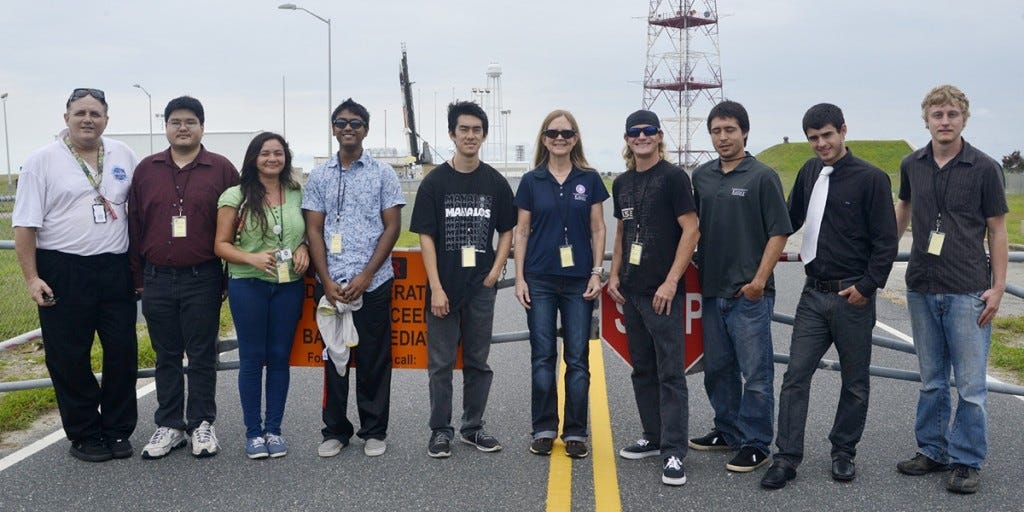Rocket Shoots Student Science into the Sky

A rocket launched from the Wallops Flight Facility in Virginia this morning was carrying a scientific payload designed and built by a team of community college students from Hawaii. "Project Imua" was the culmination of an ambitious and unique collaboration among four campuses across the state.
When I last wrote about the project in June, the team had just stress tested its payload at the Hawaii Space Flight Center at UH Manoa. The moment of truth came just after midnight Hawaii time.
“You just see the thing ignite and shoot off into the sky," said Kapiolani Community College student and "Project Imua" team member Kalaimoana Garcia said in a statement. "It’s the most amazing feeling in the world, especially since we’ve been working on it for over a year... we are finally seeing all of our hard work pay off.”
The RockSat-X rocket was a two-stage Terrier-Improved Malemute rocket, which takes off with enough thrust to subject its cargo to ten Gs (compared to the three Gs experienced by astronauts aboard the space shuttle). The sounding rocket quickly achieved suborbital flight at an altitude of over 90 miles, then deployed the "Project Imua" instrument along with a number of other payloads contributed by other institutions of higher education.
But "Project Imua" represented the only payload among seven that was submitted by a multi-campus team, and the only one from community college students.
The project sought to study the sun's ultraviolet radiation in the upper atmosphere, or the upper threshold of the thermosphere. The fixed payload size was less than a cubic foot, and the students assembled a UV spectrometer (including poer management and data collection modules).
Students from each community college campus capitalized on their respective schools' strengths and focused on different components. The Honolulu Community College team designed the electronic circuitry for power and telemetry, Kauai Community College students designed and built the payload’s instrumentation, the Kapiolani Community College team worked on the printed circuit board, and Windward Community College students put all the components together and performed static tests on the payload.

What goes up must come down, and the rocket and the cluster of scientific experiments it was carrying eventually fell into the ocean, the descent slowed by a parachute. After the rush of the launch fades, the "Project Imua" team and their fellow student scientists will get to work retrieving and analyzing the data collected during the flight.
"Project Imua" was the focus of tonight's broadcast of Bytemarks Cafe on Hawaii Public Radio. We spoke with Windward Community College student Elena Barbour (who led the Housing Design, Integration & Static Testing team), Honolulu Community College student Debora Pei (who led the Power, Telemetry & Engineering Experiments team), and Joe Ciotti, a professor and director of the Center for Aerospace Education and Hōkūlani Imaginarium at Windward Community College.
It was a fun conversation, as we discussed how the geographically diverse team collaborated across thousands of miles, what the students learned and took away from the experience, and what they planned to do next. Listen here, or on the HPR website:
https://archive.org/download/project-imua/project-imua.mp3
"Project Imua" is funded by a two-year, $500,000 NASA grant focused on expanding science opportunities at community colleges and technical schools.

Photos courtesy the University of Hawaii System on Flickr.











